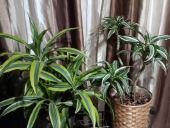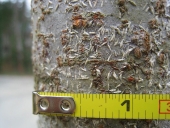Konstantinos Karoubas wrote:Hello Dave,
Yeah, interesting discussion on the pines and controlled burns.
I am amazed at how fertile the land becomes after a fire.
The acidic, pine polluted soil becomes fertile.
It gives us a window of 2 to 3 years to introduce other tree species and shrubs.
Do you think oak forests also need controlled burns?
Kostas
Hi Kostantinos,
Thanks for sharing this saga with us. Please come back with periodic updates.
Fire and oak reminded me of a type of eco-systen in North America the Oak Savanna. Light periodic burns maintain the oaks as the dominant tree species and a dappled grassland.
Check out :
https://en.m.wikipedia.org/wiki/Oak_savanna
There is a section about Mediterranean versions.
Also check this Dehesa link:
https://en.m.wikipedia.org/wiki/Dehesa "a multifunctional, agrosylvopastoral system (a type of agroforestry) and cultural landscape of southern and central Spain and southern Portugal". Think of the acorn fattened pork and truffle hunting... yum yum!
I remember, in Portugal, seeing the cork oak trees growing in wheat savannas.
Here in southern Ontario, Canada, we have a few remnants of prarrie grasslands and oak savannas and lush Carolinian forest. What gets expressed will depend on the soil, water, fire history and human histiry.
Our farm is largely sand based. A prior owner established a couple of pine/oak blocks 20 years ago; already becoming a deer pasture and enjoyable walk. A tree advisor suggested that it is time to start thinning the pine to open the canopy even more for the oaks. I doubt that we will consider fire in our tool box because it is surrounded on three sides by Carolinian forest, but continual gradual thinning of the pine is planned.
Always keep learning and sharing; that is part of our human nature.








